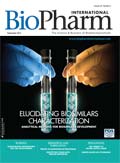Gauging the Outlook of the Biologics Market
Mike Jenkins, general manager of Catalent Biologics discusses the evolving landscape of the biologics market and hurdles faced in the development and manufacture of these innovative products.
Biologics are among the most expensive pharmacotherapies as noted by IMS Health, and yet, there is a growing demand for these specialty drugs as they continue to outperform in the global market, delivering novel treatment alternatives for a variety of diseases (1). The biologics market is fuelled by launches of recombinant insulins, human growth hormones, erythropoietins, granulocyte colony stimulating factors, and the monoclonal antibodies, which are reported to have the strongest R&D pipeline (2). BioPharm International spoke to Mike Jenkins, general manager of of Catalent Biologics development and manufacturing facility in Madison, WI, about the evolving landscape of the biologics market and hurdles faced in the development and manufacture of these innovative products.
BioPharm: What are the main challenges in biologics manufacturing?

Jenkins: The old saying ‘the process is the product’ is true. Biological systems have inherent variability, and understanding the structure function relationships is very important. A typical manufacturing batch takes over a month to grow cells, and the purification process as well as stability during production can present issues. Change control is very important for a biologic and moving sites or making ‘process improvements’ may have surprising effects on the product.
The key to ensuring high precision in the manufacturing process so that a biologic product can be consistently produced is quality by design alongside the use of platform processes and careful management of the supply chain. Making sure you understand your molecule and how it relates to activity is very important as is process variation and how that affects the molecule.
A well-understood and consistent manufacturing process helps reduce the number of aborted batches. The consistency of cell banks, supplies, especially cell or product contact, as well as the consistency of manufacturing, quality control, and quality assurance are key to success. Redundancy in plants capable of carrying out the process is also crucial. In all the above scenarios, consistent redundant sources of cells, materials, people, and facilities, are key. It is also important to recognize failure through the development of robust assays, for example, knowing how tight to set specification is very important.
BioPharm: Are the current technologies for biologics manufacturing sufficiently addressing the requirements of the complex processes involved?
Jenkins: The industry is getting better all the time, but many of these changes are incremental, and a step change is needed. The industry needs to come up with new models, from both a business and technical perspective, to prepare for pandemic response and to open further new markets. These markets include personalized medicines where drug development begins with obtaining starting material from a patient, the ability to develop products for smaller market sizes, and even the veterinary market.
Single-use technology offers some solutions, for example, in virtually eliminating the risk of cross contamination, processing smaller batches, and scalability. The changes needed, however, include big-picture technical challenges, for example in finding more efficient ways to purify proteins, better ways to grow cells to obtain higher titers and cleaner starting materials as well as the smaller, less exciting changes, such as standardization of single-use connectors and films that will also fundamentally affect the industry.
BioPharm: Where do you see biologics manufacturing in five years time?
Jenkins: There will certainly be breakthroughs in manufacturing efficiency, and for new technologies, such as antibody-drug conjugation, to drive better treatments. The industry acknowledges that advances in site-specific conjugation and improved linker technologies are exciting, as indicated in the Hanson Wade survey where 53.8% and 44.2% of respondents stated that they were excited to hear about advancements in ‘site specific conjugation” and ‘improved linker technologies’ respectively (3).
Platforms such SMARTag (a proprietary technology to develop optimized antibody-drug conjugates that Catalent has licensed from Redwood Bioscience) are important in offering ‘programmable’ site-specific drug placement, together with better safety and efficacy, ‘scalability’ and ‘manufacturability.’ The trend towards this type of technology will lower the mass (kilograms) of drugs required for new product development and increase product efficacy as well. Many of these products will be more complex than the current biologics, thereby, leading to the need for more extensive characterization and testing.
It is likely that we will see more countries wanting to address concerns with foreign supply chains through manufacturing biologics within their own borders. These concerns stem from well-documented incidents of drugs shortages and the potential for unpopular and potentially destabilizing rationing during a pandemic. Single-use manufacturing technologies will help enable this trend. Many countries with the desire to develop biomanufacturing will start with developing biosimilars and progress toward novel biologics.
References
1. IMS, “Shaping the Biosimilars Opportunity,” accessed Aug. 5, 2013.
2. Visiongain, “Biosimilars and Follow-On Biologics: World Market 2013-2023,” accessed Aug. 5, 2013.
3. Antibody Drug Conjugate survey results, accessed Aug. 5, 2013.

Thermo Fisher Opens Advanced Therapies Collaboration Center in California
April 18th 2025The 6000-square-foot facility will provide cell therapy developers the support they need to transition to CGMP manufacturing, and an expanded footprint of the new center is expected to open in Philadelphia later in 2025.
Teva and Samsung Bioepis Launch Biosimilar Eculizumab in US Market
April 17th 2025Eculizumab-aagh (EPYSQLI) is now available in the US to treat patients living with difficult-to-treat rare diseases such as paroxysmal nocturnal hemoglobinuria, atypical hemolytic uremic syndrome, and generalized myasthenia gravis.